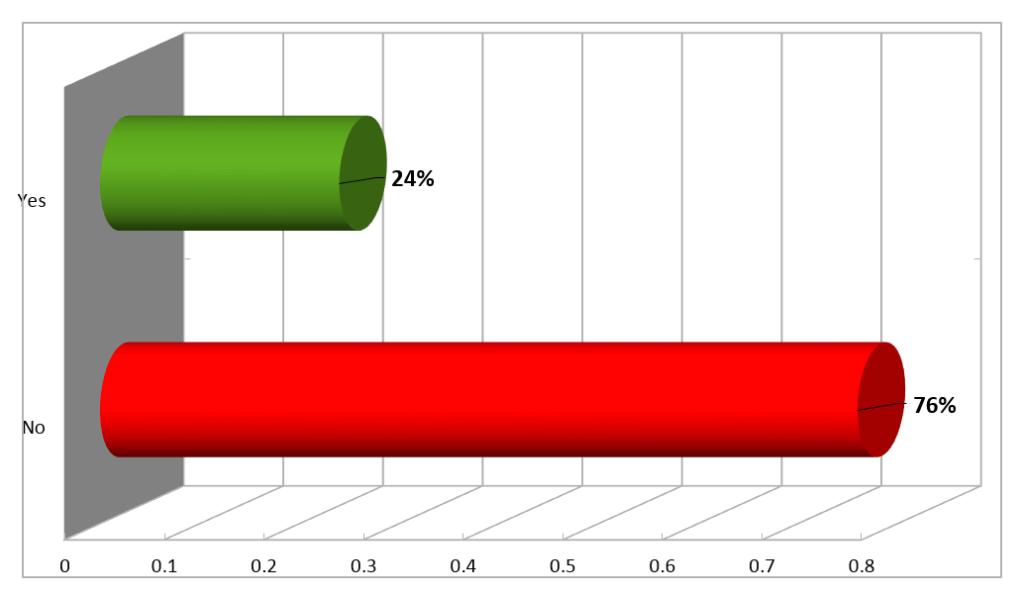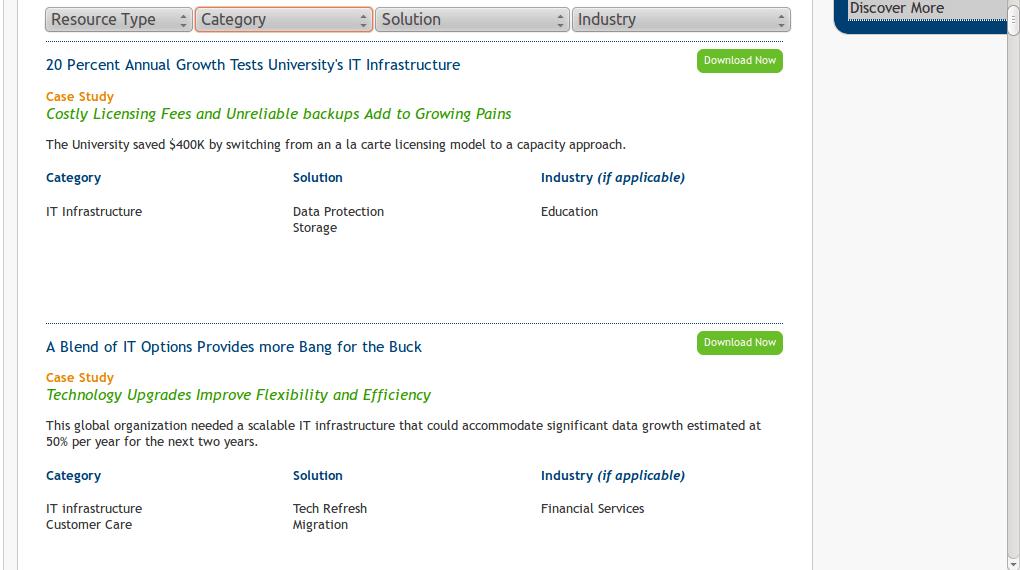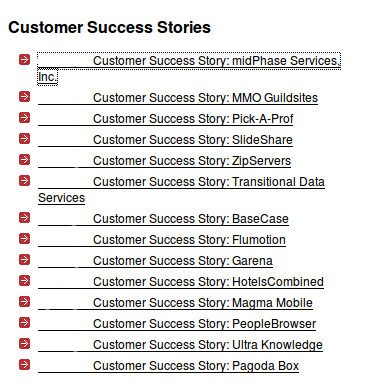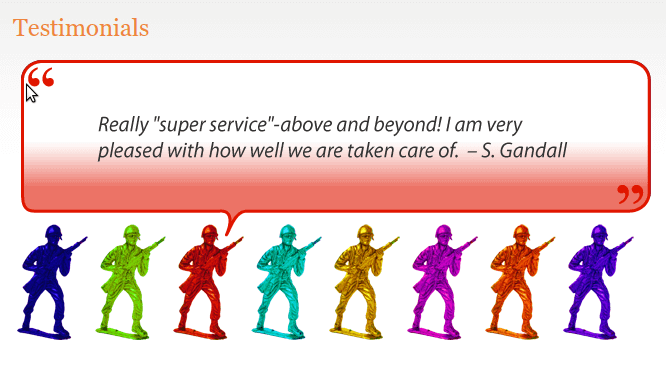My Content Audit Journey
A few years ago, I conducted an in-depth content audit of how technology firms were using case studies for marketing. It was inspired by a question, interesting to me at the time, about how content marketing efforts might differ from technology companies in different geographic locations based on the maturity of the tech sector in their city or region.
My null hypothesis was that marketing is marketing, and best practices are best practices, such that regardless of how nascent or mature a city’s tech industry, companies’ marketing efforts would be on par with one another.
That turned out not to be true at all. Cities were chosen based on their rankings in The Business Journals’ “America’s Top 100 High-Tech Centers”.
When holding constant the number of the firms (n=30 per city) and the measure of case study use (all 150 firms had published case studies), firms in more mature tech centers had many more case studies than firms headquartered in “up and coming” centers.
While raw count differences might be chalked up to firms in Silicon Valley (and other established tech centers) simply having been around longer – such that they had more time to accumulate customers and customer case studies – other measures mirrored the trend seen above. For example, across 275 firms (55 in each city; 30 with case studies and 25 without), the trend held when measuring video testimonial usage.
The trend continued even in terms of shareability – measured as the number of firms that added social share buttons to their case studies. Except for Seattle, which broke the trend <insert facepalm>.
Industry Content Audits Lead to Better Marketing
Here’s the upshot. You may not care how the marketing at tech firms in Pittsburgh or Houston or Timbuktu compare to technology firms in areas like Silicon Valley (though if you’re from one of those “up and coming” tech cities, you probably should). But you do care about making your marketing awesome.
I present the case above to share that interesting things may emerge from a competitive or industry content audit – some expected, and some not. My audit revealed many insights beyond the scope of my initial inquiry.
As I manually slogged through hundreds of websites to gather the data (there are now automated tools for that), I couldn’t help but notice the drastic range of marketing savvy (not just across cities, but across all companies examined) as it applied to website design, social media use, content presentation and more.
Practices that seemed like pure common sense to me were completely missing from firms both well known and unknown. But there were some surprises and gems too, companies I knew I could learn something from.
Below, I share a few hard-won insights from my slog into case study content – tips I hope you can use to improve your content marketing and presentation.
3 Tips to Improve Your Marketing with a Content Audit
Tip 1: Pay Attention to Best Practices
Go into your content audit with best practices in mind, and really notice whether or not your competitors are following them.
This isn’t just about your competitors though – examining them with best practices in mind will be like holding up a mirror to your own content. You may realize, “Oh, $#&!, we’re not doing that either.” Because sometimes you are too close to your own content to gain perspective.
For example, here’s a different view of the shareability data from above.
The non-shareable percentage was 76%. Which just Blew. My. Mind.
Granted the data is a few years old. But now that I’ve trained myself to look for it, I still see it everywhere. I was on a website today looking at a technology firm’s case studies. There were no share buttons. I was shopping for shoes last week and wanted to pin a pair I liked to my Pinterest account. There was no pin button. And this was the website of a well-known retailer.
My anecdotes aside, just take a look at Rival IQ’s most recent RRI on High-end Department Stores. Their research revealed a number of gaps in how major brands were managing their social media presence. It wasn’t lack of share buttons they uncovered, but other best practices, such as failing to add images to tweets to increase engagement and not leveraging hashtags on Twitter and Instagram.
Tip 2: Make your Content Easy to Find and Choose
Something else I started to pay attention to, the deeper I got into my research, was just how accessible content was on a particular website.
On some sites, I had to drill down ten pages to find a case study buried on a product page. In the best case scenarios, there was a Resources button in the main menu that offered a drop down in which Case Studies or Success Stories were listed as an option. Some firms had Success Stories as an option in the main menu itself.
However large or small your website, having a Resources menu option that links to a content repository is a great practice. Individual pieces of content can still be linked to and referenced in various relevant pages throughout your site, but a centralized location that is searchable makes finding what they need quick and easy for your prospects and customers.
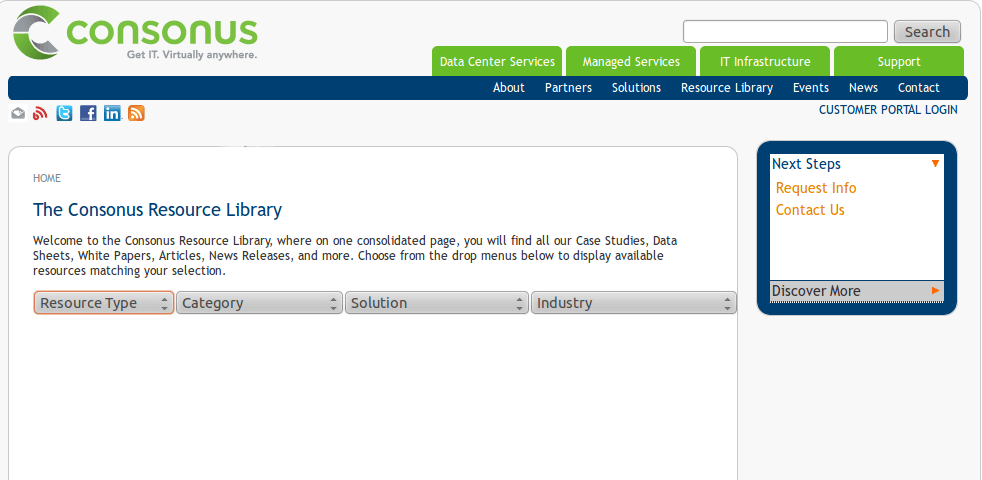
Consonus makes it easy to find content. The company was recently acquired; unfortunately the buyer didn’t keep this great resource page.
Consonus goes beyond just making their content easy to find – they make it easy to choose as well. There are multiple sorting options, which allows prospects to find content that is specifically relevant to their industry.
The screenshot below shows the results of a search for Resource Type = Case Study. Notice that for each case study presented, the other search fields are populated as well, so prospects would be well informed as to the relevance of this content to their own needs.
In addition to the categorization of each case study by solution, industry, etc…, descriptive value for the customer (and SEO value for the crawlers) is contained in the the title, subtitle, and brief description of each case study result.
Contrast that with the screenshot below, a simple list of company names that offers no further detail to guide a reader to understand what would be useful for them. They would have to open each case study and scan it until they found what they needed (if it was there at all).
The net-net here is whether it’s case studies or product features or other content, make sure the content is easy to find and comes up in relevant search results!
Tip 3: Be Open to Inspiration
Along with case study content, I was also tracking the use of customer testimonials and quotes. I paid attention to whether or not companies were using them, but also to their presentation and ubiquity throughout a particular website.
The same testimonial presented in the same spot on every page made me bang my face against the keyboard until I forgot why I was upset. Fortunately for my face, these instances were rare, but overall there wasn’t a whole lot of creativity in the use of testimonials.
But there was enough variety and a few gems from which I could distill a “do’s and don’ts” list for myself and my clients.
And one testimonial in particular got my creative juices flowing. On the surface, it was nothing special – a standard customer quote presented adjacent to a product description and specs.
What stood out for me were two things.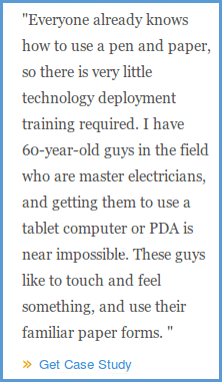
- First was the quality of the quote itself. After reading so many testimonials that basically said “<Product X> is <Superlative>!”, this one stood out for speaking specifically about the appeal and value of the product to its end user.
- Second was the link below the testimonial to a corresponding case study.
I had not seen anyone else (out of hundreds of websites) do this, and when I saw it for the first time, it became an instant best practice for me. It also gave me ideas about other ways to build the buyer journey into the content I was creating.
One idea was that instead of gating a piece of content up front, why not embed an email form at the end that takes the prospect to the next stage? Such as a thought leadership white paper that includes an email form to request a case study or data sheet that provides more specific product information than was included in that piece, for example.
This way the onus was on creating great content that made the prospect want to request more information, rather than capturing their email upfront when they were just a super cold lead. It would have to be tried and tested to see it’s value, but the idea wouldn’t have occurred to me at all without the audit.
Ready, Set . . . . Audit!
So whether researching industry trends as I was, or researching your competition, the practice of looking closely at what is being done by other companies with a content audit can prove not only informative, but inspirational.
You not only get to see what you are already doing well and where you need work, but in the sheer volume of data you observe new ideas and directions may arise.





